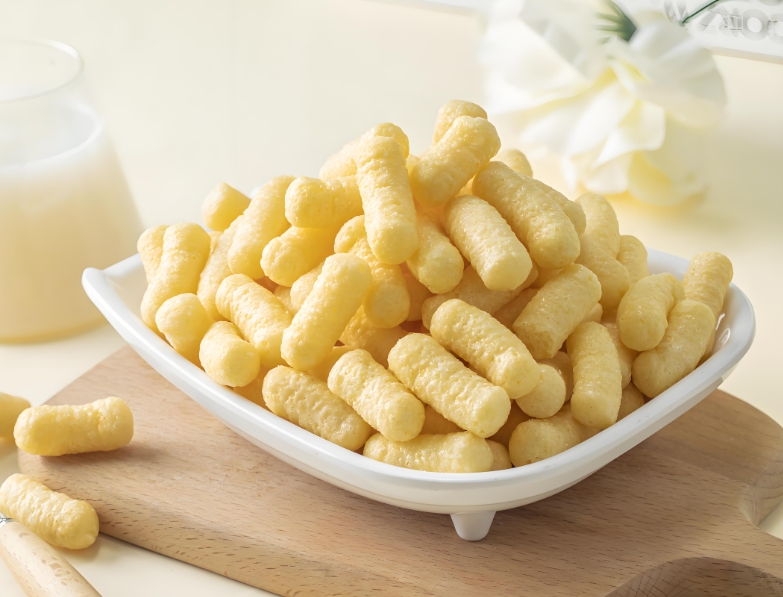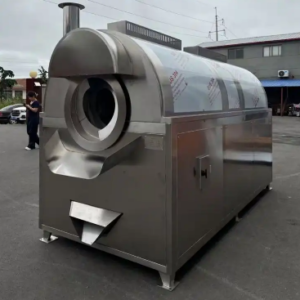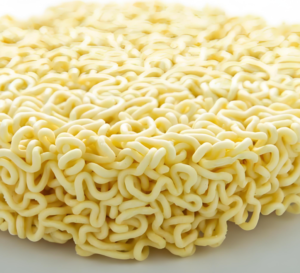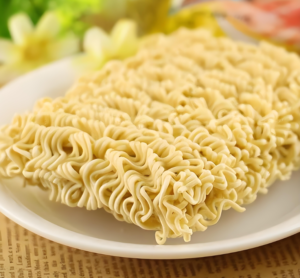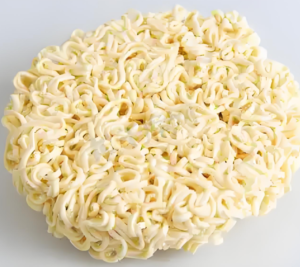Controlling Moisture Content in Puffed Snacks: Key Strategies and Best Practices
Moisture content is a critical factor in determining the quality, texture, shelf life, and consumer acceptability of puffed snacks. Excess moisture can lead to sogginess, microbial growth, and rancidity, while insufficient moisture may result in brittleness or an unpalatable texture. This article outlines practical strategies for effectively controlling moisture during the production and storage of puffed foods.
1. Importance of Moisture Control in Puffed Snacks
Puffed snacks, such as extruded cereals, cheese balls, or rice cakes, rely on their crispiness and light texture. Water acts as a plasticizer during the extrusion or puffing process, but residual moisture must be carefully managed post-production. Key risks of improper moisture control include:
- Texture degradation: Loss of crispness due to moisture absorption.
- Microbial spoilage: High water activity (Aw > 0.6) promotes mold and bacterial growth.
- Oxidative rancidity: Moisture accelerates lipid oxidation in fat-containing snacks.
2. Pre-Production: Raw Material Selection and Preparation
- Raw material quality: Use grains, starches, or flours with consistent moisture content (typically 8–12% for cereals). Pre-dry hygroscopic ingredients if necessary.
- Pre-conditioning: Optimize water addition during mixing to achieve uniform hydration. Overhydration can lead to uneven puffing, while underhydration causes incomplete gelatinization.
- Moisture testing: Implement rapid testing (e.g., near-infrared spectroscopy) to verify raw material moisture before processing.
3. Processing Parameters for Moisture Management
a. Extrusion/Puffing Stage
- Temperature control: High temperatures (120–180°C) vaporize excess moisture, creating the porous structure. Adjust based on ingredient composition.
- Residence time: Prolonged heating ensures moisture reduction but risks over-drying. Monitor in-line sensors to balance expansion and final moisture.
- Die design: Smaller die openings increase shear force, improving moisture evaporation.
b. Post-Puffing Drying
- Multi-zone drying: Use conveyor dryers or fluidized-bed dryers with descending temperature zones to gradually reduce moisture without case hardening.
- Target moisture: Aim for 1–3% final moisture content for most puffed snacks. Critical Aw levels vary by product (e.g., <0.3 for potato-based snacks; <0.4 for cereal-based).
4. Post-Processing and Packaging
- Cooling: Allow products to cool in a low-humidity environment to prevent moisture reabsorption.
- Humidity-controlled packaging: Use moisture-resistant barriers (e.g., metallized films, aluminum laminates) with desiccants or nitrogen flushing to extend shelf life.
- Hybrid packaging solutions: Edible coatings (e.g., cellulose, lipids) can provide an additional moisture barrier.
5. Monitoring and Quality Assurance
- In-line sensors: Deploy real-time moisture analyzers (e.g., capacitive or microwave-based systems) during drying.
- Lab testing: Validate with oven-drying (AOAC 925.10) or Karl Fischer titration for accuracy.
- Accelerated shelf-life testing: Simulate storage conditions (e.g., 38°C, 90% RH) to predict moisture migration issues.
6. Addressing Common Challenges
- Environmental humidity: Control production room humidity (<40% RH) to minimize post-processing moisture uptake.
- Ingredient variability: Adjust processing parameters dynamically for batches with fluctuating initial moisture.
- Rehydration prevention: Add humectants (e.g., glycerol, sorbitol) in seasoned coatings to balance crispness and moisture retention.
Conclusion
Effective moisture control in puffed snacks requires a holistic approach, combining optimized processing, rigorous monitoring, and advanced packaging. By maintaining precise moisture levels, manufacturers can ensure consistent product quality, reduce waste, and meet consumer expectations for crunchiness and freshness. Continuous innovation in drying technologies and predictive modeling (e.g., AI-driven moisture prediction) will further enhance control strategies in the evolving snack industry.

